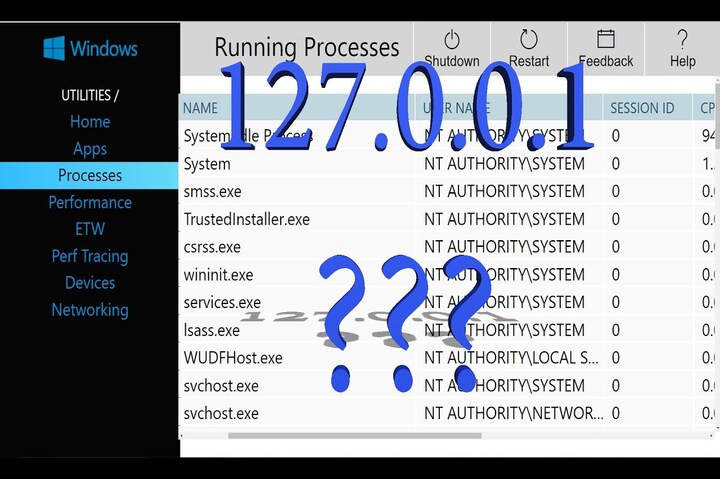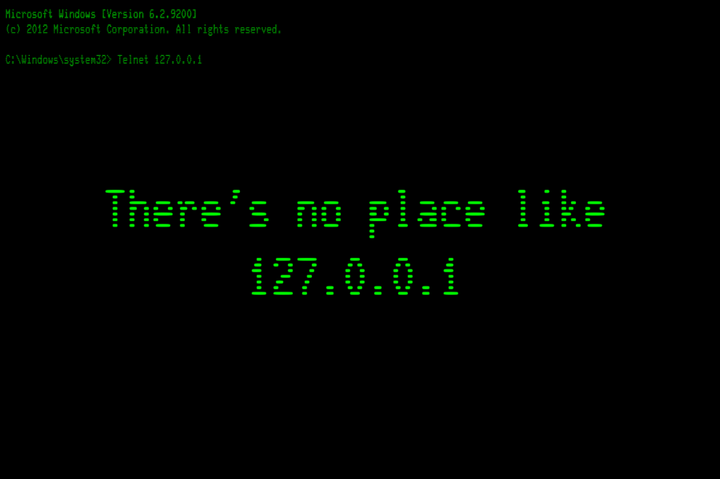Understanding 127.0.0.1:62893: The Localhost IP and Port Number
Introduction
Have you ever wondered about the mysterious world of localhost and the significance of the IP address 127.0.0.1:62893? In this blog post, we will take a deep dive into cracking the enigma of localhost and explore how to harness the power of 127.0.0.1:62893 for seamless testing. Moreover, 127.0.0.1 is just one address within a broader range defined for loopback purposes, which spans from 127.0.0.0 to 127.255.255.255. However, 127.0.0.1 is by far the most commonly used address within this range. It’s synonymous with the hostname “localhost,” which can be used interchangeably in most scenarios. The simplicity and efficiency of using “localhost” or 127.0.0.1 allow for streamlined development workflows and testing processes.
Understanding the Basics of 127.0.0.1
0.0.1 represents an IP address that’s pivotal in the architecture of internet protocols, serving as the standard address for accessing the local computer’s network services. This special address is part of the IPv4 network standard, underpinning the concept of loopback functionality. This means that data directed to this IP address is immediately sent back to the originating machine without leaving it or needing any external network interface. The loopback mechanism is an essential tool for developers and network administrators as it facilitates local testing, diagnostics, and system configuration without the need to communicate over an external network.
The practicality of 127.0.0.1 extends beyond simple ping tests to verify the operational status of the local network stack. It is a cornerstone in developing and debugging web applications, databases, and other services that rely on network connectivity. When developers work on web applications, for instance, they can use this address to host a local server.

The Significance of Port Numbers in Localhost Testing
Port numbers play an instrumental role in the functionality of localhost testing, acting as essential gateways for routing data to the correct services or applications on a computer. When engaging with localhost, or 127.0.0.1, every application or service that needs to communicate over the network is assigned a specific port number. This system ensures that data sent to a port, such as 62893, reaches the intended target without conflict or misdirection, providing a segregated and efficient testing environment.
The utility of port numbers becomes apparent when multiple applications run simultaneously on localhost. For instance, a web server might be operating on port 80 or 443, while a database service like MySQL listens on port 3306. By assigning a unique port number, like 62893, to a specific testing instance, developers can isolate this environment from others, allowing for focused and interference-free testing. This segregation is crucial for debugging and development, as it enables the precise examination of application behavior under specific conditions without the risk of cross-interference from other running services.
Moreover, understanding and utilizing port numbers empowers developers to simulate real-world scenarios more accurately within their local environment. By configuring applications to communicate through specific ports, developers can mimic production environments, testing how their applications would interact with various services and APIs once deployed. This approach not only aids in identifying potential issues before deployment but also enhances the developer’s ability to conduct thorough and effective testing.

Setting Up Localhost for Testing on 127.0.0.1:62893
Embarking on the journey of configuring your local development environment for testing on 127.0.0.1:62893 involves a series of straightforward yet crucial steps.
For developers employing tools like Node.js, Python Flask, or Ruby on Rails for server-side scripting, the process involves adjusting the development server’s startup script or command-line parameters to include `-p 62893` or its equivalent, depending on the syntax required by the specific technology stack. Similarly, for applications that rely on configuration files, such as Apache or Nginx, modifying the `Listen` directive or creating a server block to listen on 127.0.0.1:62893 is necessary.
Advantages of Using 127.0.0.1:62893 for Development and Testing
Leveraging 127.0.0.1:62893 for your development and testing tasks brings forth a plethora of benefits, central among them is the unparalleled control and security it provides. In an environment where security breaches are ever-looming, the isolated nature of localhost testing ensures that experimental features, bug fixes, or any form of development work remains shielded from the external network. This isolation not only minimizes the risk of external threats but also prevents accidental exposure of unstable versions to end-users.
Another significant advantage is the enhancement of debugging efficiency. Given that 127.0.0.1:62893 is a dedicated port, it becomes easier for developers to pinpoint issues, as the testing environment is segregated from other applications that might be running concurrently. This dedicated space simplifies the process of logging, monitoring, and analyzing application behavior, enabling developers to execute more detailed and focused debugging sessions.
Additionally, the use of 127.0.0.1:62893 accelerates the development cycle by facilitating rapid prototyping and testing. Changes can be implemented and reviewed in real-time, without the delays associated with deploying in a more complex server environment. This immediacy is invaluable in iterative development methodologies such as Agile, where speed and flexibility are paramount.
It also promotes a higher level of accuracy in testing scenarios. By emulating the conditions in which the application will operate, albeit in a controlled and safe environment, developers can observe and adjust how their application interacts with different services and APIs. This approach not only aids in refining the application’s functionality but also ensures compatibility and performance standards are met before deployment.

Common Challenges and Solutions When Working with Localhost
Navigating the intricacies of localhost development, particularly when working on 127.0.0.1:62893, can present several hurdles that might stymie even seasoned developers. One prevalent issue is the occurrence of port conflicts, where multiple applications or services attempt to bind to the same port simultaneously, resulting in errors and preventing applications from launching properly.
Also Read: 01772451126: How to Use 01772451126 to Your Advantage
Additionally, incorrect network configuration can hinder the functionality of localhost testing environments. This can range from improperly set network interfaces to issues with the hosts file in some operating systems, which can redirect or block traffic to 127.0.0.1. Developers can tackle these challenges head-on with various network monitoring and management tools.
These tools help identify and resolve port conflicts, monitor firewall activity, and ensure optimal network configurations for localhost development. Engaging with community forums or developer support groups can also provide insights and solutions for common problems encountered when working with 127.0.0.1:62893, leveraging collective knowledge and experience to overcome these obstacles.

Best Practices for Local Host Testing Efficiency
To ensure efficient testing on 127.0.0.1:62893, it’s imperative to adopt a structured approach that enhances productivity and minimizes common pitfalls. One effective strategy is the meticulous documentation of port usage. Record all services or applications assigned to specific ports to prevent overlap and conflicts. Regularly update this log and share it among team members. This will facilitate clear communication and coordination.
Another critical practice involves the proactive management of your testing environment. This includes the periodic review and clearance of ports that are no longer in use. Such housekeeping prevents the accumulation of obsolete services running in the background, which can consume system resources and lead to unnecessary complexity. Tools that scan and report on port usage can be incredibly helpful in identifying ports that can be freed up.
Leveraging specialized software for monitoring localhost traffic is also advisable. These tools provide valuable insights into the data flowing through your ports, allowing you to detect anomalies, understand application behavior, and improve security measures. They can alert you to unauthorized access attempts or unexpected data flows, which could indicate misconfigurations or potential security vulnerabilities.
In addition to these technical strategies, fostering a culture of collaboration and knowledge sharing within your development team is crucial. Encouraging team members to share tips, tricks, and tools they’ve found useful can dramatically improve the efficiency and effectiveness of localhost testing. Regularly scheduled review sessions where team members can discuss challenges and solutions related to localhost testing not only enhance individual knowledge but also contribute to a more cohesive and supportive team environment.
By integrating these best practices into your workflow, you can optimize your localhost testing process, making it more streamlined, secure, and conducive to high-quality development work.
Conclusion
In essence, the adept use of port numbers in localhost testing, particularly with unique identifiers like 62893, is a cornerstone of modern software development. It supports a structured approach to testing, providing developers with the tools to efficiently route data, isolate services, and simulate complex network environments, all within the confines of their local machine. Furthermore, using this specific port for development tasks supports standardization within teams, making it easier for members to collaborate and share their work without the hassle of configuring different settings for each developer’s environment. It establishes a common ground for testing protocols, contributing to a more cohesive and efficient development process.
In scenarios where multiple developers or teams work on the same local network, the significance of port numbers is further magnified. This enables concurrent development and testing without conflicts. Each service can be configured to run on a separate port, achieving this isolation. Consequently, this facilitates a more collaborative and productive development process, enabling teams to work simultaneously on different components or services of a larger application. Testing the configuration is as simple as starting your application or service and navigating to http://127.0.0.1:62893 in your web browser. Set up everything correctly, and you’ll see your application’s landing page or get the appropriate response from your service. This immediate feedback loop lets you develop and test rapidly, making real-time adjustments as needed.
Explore more, CyberPulseLTD






